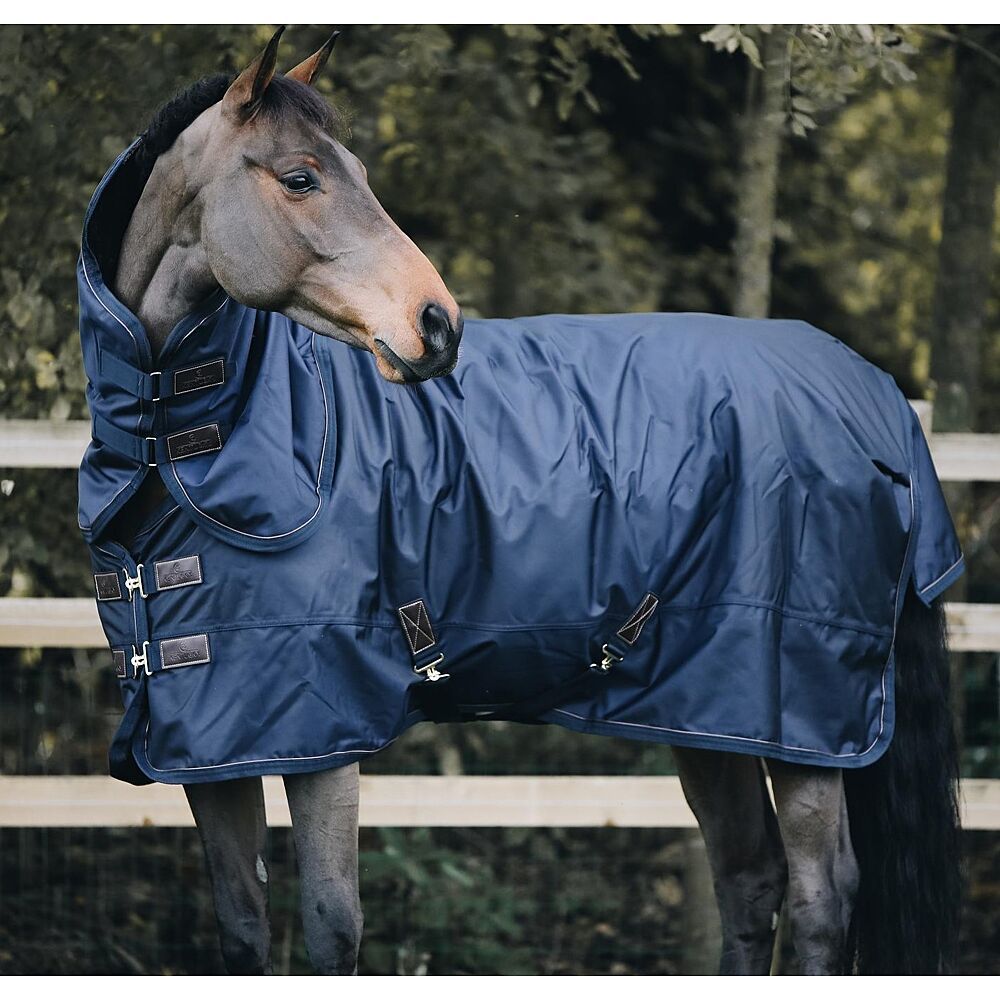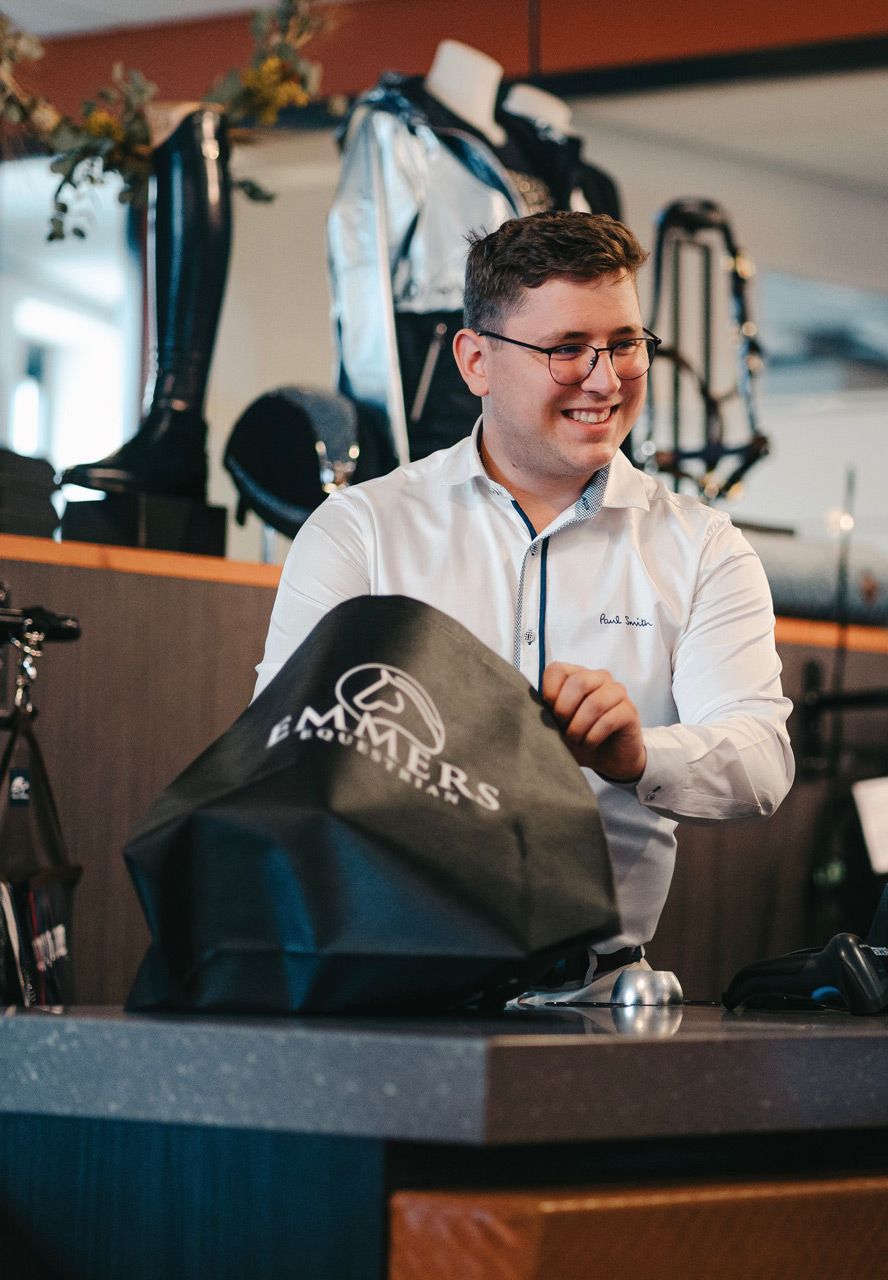Autumn has officially arrived, and now we're really starting to notice it. Temperatures are dropping, it's windy and rainy. For many people, this is the beginning of a cozy time, but for horse owners, it's mainly the beginning of blanket season. Every year, questions arise about which blanket to put on and when. Unfortunately, there's no definitive answer, as each horse is unique. But with this blog, we'll guide you through the world of winter blankets.
What to Consider
To know which blanket to put on your horse and when, there are several important factors to consider. First of all, the filling of the blanket depends on whether your horse is clipped or unclipped. Horses with a thick winter coat can usually go the whole winter without a blanket. If a horse is cold, it will raise its winter hairs to trap air, which acts as insulation. If you decide not to clip your horse but still want to use a blanket, keep in mind that the blanket will flatten the hairs, preventing air from getting trapped and rendering the horse unable to insulate itself against the cold.
If your horse is clipped, you'll always need to provide a blanket. The filling depends on the temperature, the hours spent in the pasture, the age, and the health condition of your horse. At the bottom of the blog, you'll find some guidelines to help you determine how many grams of filling to use at which temperature. The number of pasture hours is also important. If your horse doesn't go outside in the winter, a thick outdoor blanket isn't necessary. If your horse braves the weather outside, a thick, waterproof rain blanket is recommended.
Age and health also play a role in choosing a blanket. Older horses have more difficulty warming themselves up, which takes a lot of energy. If your horse is ill or has a poor immune system, it may be necessary to choose a thicker or thinner blanket. It's crucial to know your horse and its routine well and consider these factors when choosing a blanket.

Different Types of Blankets
There are many different types of blankets available. These include rain blankets, winter blankets, stable blankets, sweat blankets, under blankets, with or without neck covers. It's understandable if you sometimes can't see the forest for the trees.
Rain Blankets
An unlined rain blanket, or outdoor blanket, protects the horse from rain, snow, and wind. This blanket is ideal for horses that go out to pasture daily. Thanks to the water-repellent layer, your horse stays nice and dry under the blanket. There are also outdoor blankets with a lining of, for example, 200 or 300 grams. These are suitable for clipped horses that still go out to the pasture or arena in winter.
Stable and Under Blankets
Stable and under blankets are clearly used in the stable. They are comfortable, soft, and warm. They come in various sizes, colors, and thicknesses. You choose the filling based on the temperature, but also on your horse. Some horses get cold faster than others. Always make sure your horse isn't too cold but also not too warm. Stable blankets are not rain-resistant, so never use these blankets outside!
Sweat Blankets
In winter, horses can sweat heavily during training. You can't just put a sweaty horse back in the stable or throw a thick winter blanket on it. That's why it's best to use a sweat blanket. These blankets are usually made of fleece or microfiber, which absorb sweat and wick moisture away. This helps your horse dry off faster, after which you can put on a thicker blanket or return it to the stable. Note: never leave a sweat blanket on for too long! The sweat will soak into the blanket, making it wet. Remove the blanket as soon as possible to prevent your horse from getting cold under the wet blanket. A sweat blanket is a simple way to keep colds and other winter ailments at bay.
Neck Covers
You can also choose a blanket with a neck cover to keep your horse's neck warm and dry. This depends on your horse's needs. If your horse gets cold easily, it may be a good choice to protect the neck from the cold. However, some horses get warm quickly, and in that case, it's better to leave the neck uncovered. Keep in mind that your horse's mane needs a lot of oxygen. When a neck cover restricts airflow, the mane can thin out.
Exercise Rugs
If your horse is clipped or wearing a blanket, it's useful to use an exercise rug. If you remove the winter blanket to ride or lunge, your horse can get cold. Therefore, using a quarter sheet during warm-up and cool-down phases can keep your horse warm. This reduces the transition from a warm stable blanket to the cold. Don't forget to remove the exercise rug during intense exercise to prevent your horse from overheating. For horses that are lively and spirited in winter, an exercise rug can also help keep them calmer by not making them want to run even more in the cold. During the cool-down, an exercise rug is recommended to prevent the muscles from cooling down too quickly.
When to Use Which Blanket?
But at what temperature should you use which blanket? As previously mentioned, the most important thing is to consider your horse. You need to know your horse very well to determine if it gets warm or cold quickly. Always watch for signs that your horse is cold, such as shivering or raised hairs. Also, know when your horse is too warm by checking for sweat under the blanket.
You also need to consider the conditions of your horse's environment. A well-insulated stable with multiple horses is much warmer than, for example, a wooden outdoor stable with only one or two horses.
Instead of using one blanket, you can layer them. For example, you can combine a 100-gram rain blanket with a 200-gram under blanket. Note that multiple blankets can be warmer than one blanket with the same filling. The air between the blankets provides additional insulation. Bucas and Horseware are some brands that use liners, which can be easily attached to outdoor blankets to prevent shifting. This allows you to easily adjust the blanket's weight according to the weather.
There is no definitive answer to the question of when your horse needs which blanket. But with the following chart, we provide some guidelines. The temperatures in the chart are outdoor temperatures. If your horse is in a warm stable, you may need less thick blankets than indicated.
Do you have any questions after reading this blog? Contact our specialists. We're happy to help.












